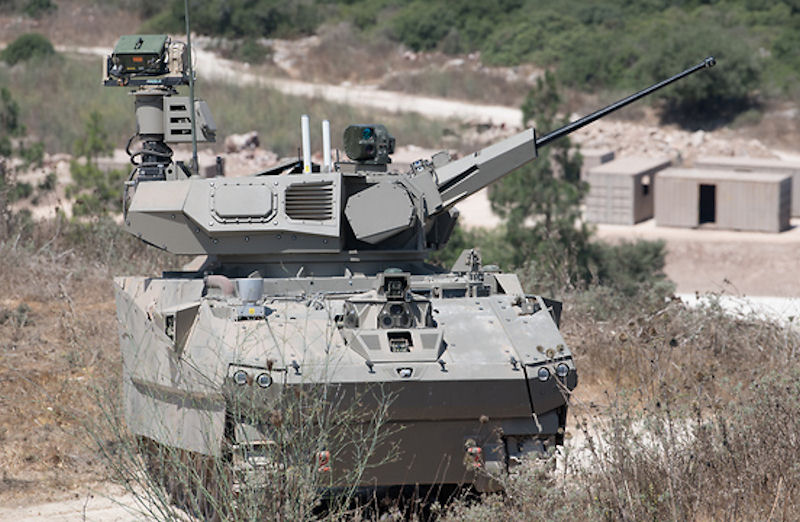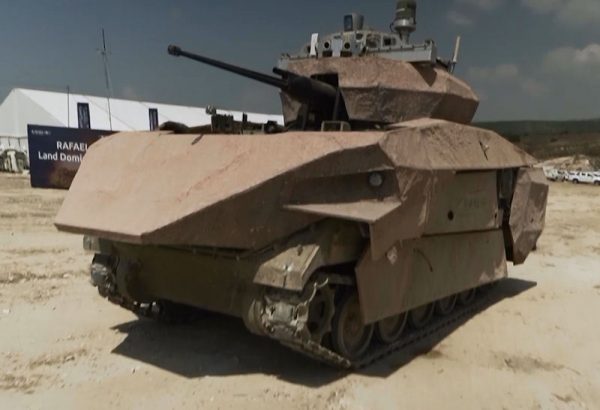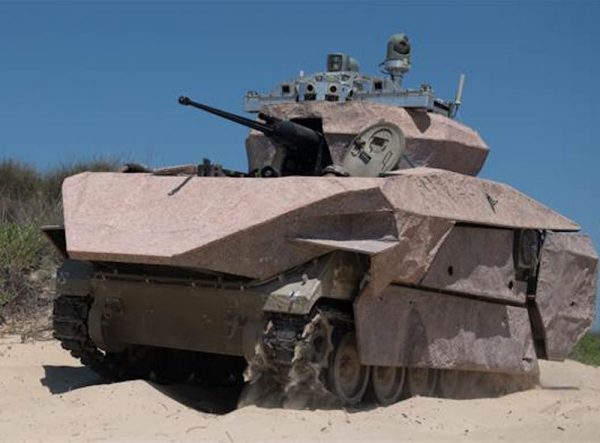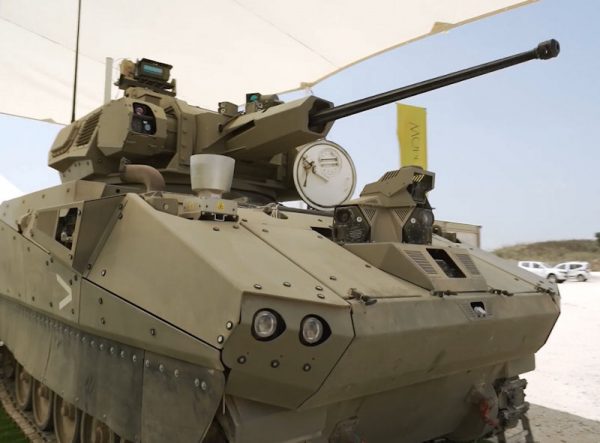Carmel Armored vehicle is More Than an Xbox on Tracks

When looking at the Carmel, one would never believe that it resembles your average teenager’s bedroom. After all, it has tank tracks, has a body made of thick steel plates, some painted khaki, and some painted black and on top is a serious antenna and sensor array.
The resemblance to a teenagers’ bedroom becomes apparent when you step inside through the access door at the back.
The Carmel has no windows, and your view of the outside world is through a panoramic video screen, and though this is a vehicle, there is no accelerator, clutch, or brake pedal, and no steering wheel.
What it does have is devices resembling tablets that allow the operators to change the speed of the vehicle or select and fire the weapons. The screen also has a panel on the side that gives the operator up-to-date intelligence about the battleground they are about to enter.

To drive this new Israeli beast, one uses something very familiar, Microsoft Xbox controller.
This Israeli prototype of the next-generation armored vehicle is aimed at the Israeli Defense Force’s active-duty members. These men and women are generally aged between 18 and 21. With this in mind, any one of them sitting behind a Carmel’s controls will immediately feel at home as they could be looking at a familiar video game.
This is no accident, and the design is very specific. Israel Aerospace Industries (IAI) has produced the Carmel for consideration by the Israeli Defense Force for its next-generation armored vehicle. The designers from IAI worked with teenage gamers to critique the system as it was being developed.

The first release of the software used a joystick similar to that in a fighter jet, but if the Carmel is selected, it will come equipped with the twin thumbsticks, bumpers, buttons, and triggers that video games traditionally use.
Meir Shabtai, general manager of the robotics division of IAI, told an interview with Stars and Stripes that the designers had seen that the drivers requested the ability to bring the control box onto their las rather than being forced to work through a fixed joystick.
As the testers played with the Carmel system, they defined the skills and accessories required to make the system work. These observations led to the software designed to operate the Carmel system.
The battalion commander of the Israeli Defence Force’s 7th Armored Brigade, Col. Udi Tzur, said that he had noted that adapting technology to suit the younger members of the force brought benefits.
Recently introduced command-and-control technology was mastered in around four hours, and he found that his younger soldiers were unafraid of the technology and more likely to experiment.
This enabled them to come up to operational speed very quickly, and the new controller was a useful interface to highly sophisticated technology to which the young soldiers could relate.
This means that the latest generation of tank commanders are unlikely to be the hardy souls from World War II and more likely to resemble the nerds from school.
Of course, the panoramic view presented to the Carmel operations crew is not make-believe but the real world outside with access to real weapons, and when shooting, real people could die.
This is the subject of many ethical debates where drone pilots who drop bombs in real life liken their jobs to playing games.

This desensitization of authentic life-and-death scenarios poses some serious questions that psychologists and the military have to explore.
In an attempt to fight this blurring of the lines between video games and real-life, IAI steered away from a virtual-reality scenario with goggles but instead opted for a design where the Carmel crew must interact with others outside of the system.
The fact that the Carmel is a vehicle, so it moves and makes noise helps to ground the crew to the realities of war rather than a game.
The software in the Carmel is not only aimed at the user-interface, but this vehicle aimed at urban conflict has a robust artificial intelligence module that teaches the AI system thousands of strategies for navigation, weapons selection, target detections, and other autonomous capabilities.
These two systems make the Carmel a formidable fighting machine. It can be run either as autonomous, semi-autonomous, or manually and it can automatically select targets and weapons, but firing the weapon must be done by a human.
Another Article From Us: Soviet Anti-tank Guns – The Real Threat to German Panzers
No matter how different the interfaces or how sophisticated the AI, at the end of the day, the operational crew must know how to use the vehicle within the theatre of war, as there are many dangers outside of the vehicle.
We can only speculate how the war of the future will be fought, but there will inevitably be more and more examples of the Carmel in armed forces worldwide.
